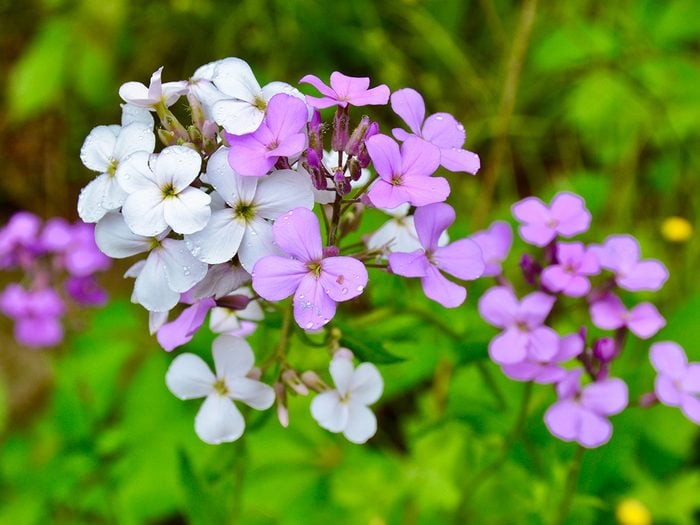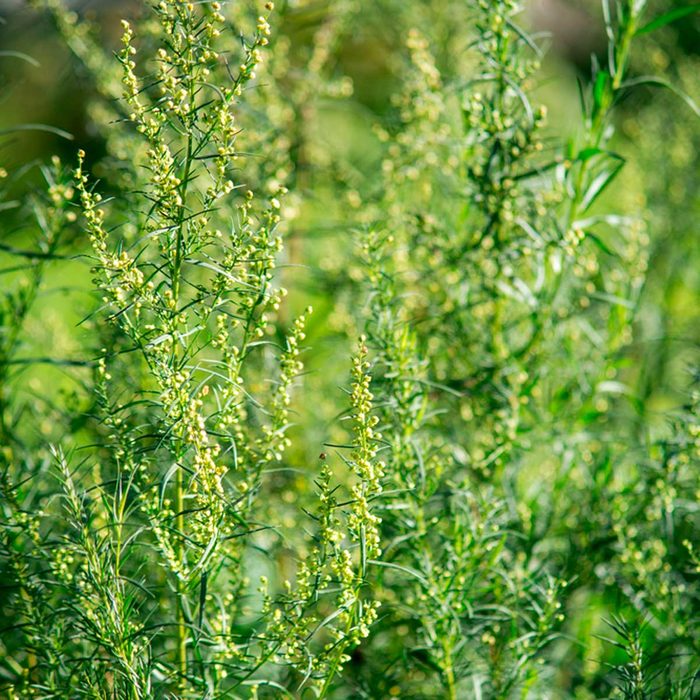
Dame’s Rocket (Hesperis matronalis)
Sometimes confused with phlox, dame’s rocket has similar-looking flowers in purple, sometimes white or pink hues. They’re fragrant, too. But the similarities end there. While phlox can be aggressive, dame’s rocket takes it a step further. These biennial pests are related to garlic mustard, a noxious weed—and act like it, too, crowding out native woodland plants.

Purple Loosestrife (Lythrum spp.)
This plant is full of bright rose to purple flowers and takes no maintenance. Problem is, anywhere near a water source—wetlands, ponds, rivers and marshes—purple loosestrife quickly gets out of hand and crowds out native wetland plants. Supposedly sterile cultivars, such as Morden Pink and Dropmore Purple, become promiscuous when the species loosestrife is nearby. Producing as many as 2.7 million seeds per plant (according to North Dakota State University), purple loosestrife should never be let loose.
Want to grow a medicinal garden? Consider adding these healing plants to your plot.

Amaranthus
Amaranthus, also called “love-lies-bleeding,” is a unique-looking garden plant with impressive size and colourful hanging tassels of flowers. It tends to look a bit shaggy for manicured gardens, but the real problem is the flowers, which are a major pollen producer in summer and can seriously aggravate both allergy and asthma sufferers.
Planning your containers for the season? Here are the best flowers for planters.

Spurge (Euphorbia)
Spurge is a pretty plant with mounded shape and bright greenish blooms, but its milky sap is a major skin irritant that can seriously injure the eyes. The plant is also poisonous if ingested. While spurge is attractive and a good groundcover for slopes, it can be a thug, displacing other plants.
No backyard? No problem! Check out these urban gardening tips.

Wormwood (Artemisia absinthium)
Wormwood, also known as mugwort, is a pollen fiend. That’s fiend, not friend, because this flower is no friend to allergy sufferers or to gardeners. It’s a thug in the garden, spreading by roots and by seeds blown by the wind. There are no chemical controls and even mowing and digging are no match for this pest.
Note: The small mounded artemisia sold at nurseries are well-behaved and should not be painted with the “red badge of scourge” reserved for wormwood.
Next, find out which plants will attract butterflies and birds to your garden.